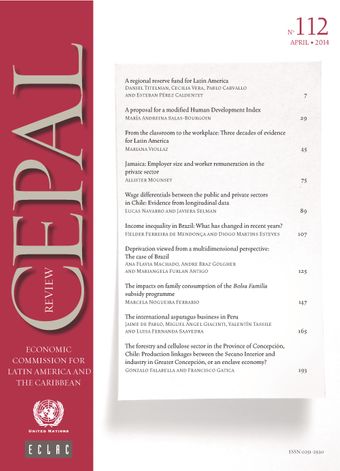-
The international asparagus business in Peru
- Source: CEPAL Review, Volume 2014, Issue 112, Dec 2014, p. 165 - 192
- Spanish
-
- 03 Dec 2014
Abstract
A variety of methodologies, such as the Foreign Trade Competitiveness Index, the Foreign Trade Policy Index and the Tradecan competitiveness matrix, reveal a process of adaptation to changes in world trade in the period from 2002 to 2012, within the context of the so-called “complex adaptive system” as a transition from the fourth to the fifth technological revolution in fresh asparagus exports from Peru. The country’s competitiveness map shows that it is not competing globally at the international level but rather partially or regionally. Mexico is its main competitor, with comparative advantages over Peru because of its currency’s real exchange rate against the United States dollar, but there are challenges that need to be dealt with in the medium term in this process of adaptation to change.
© United Nations





